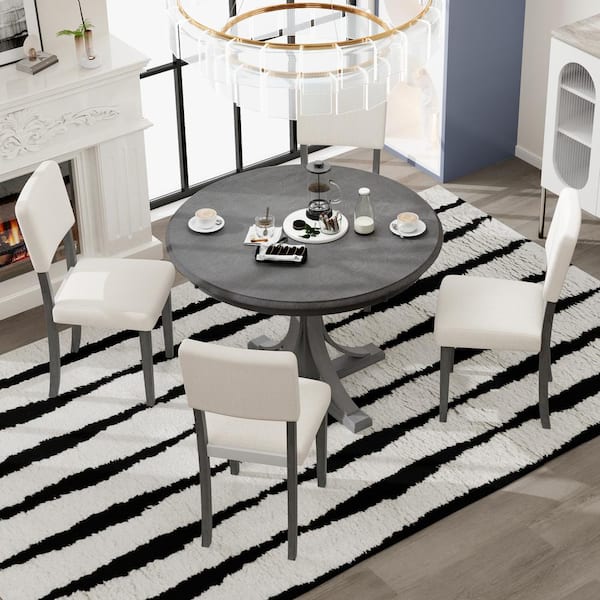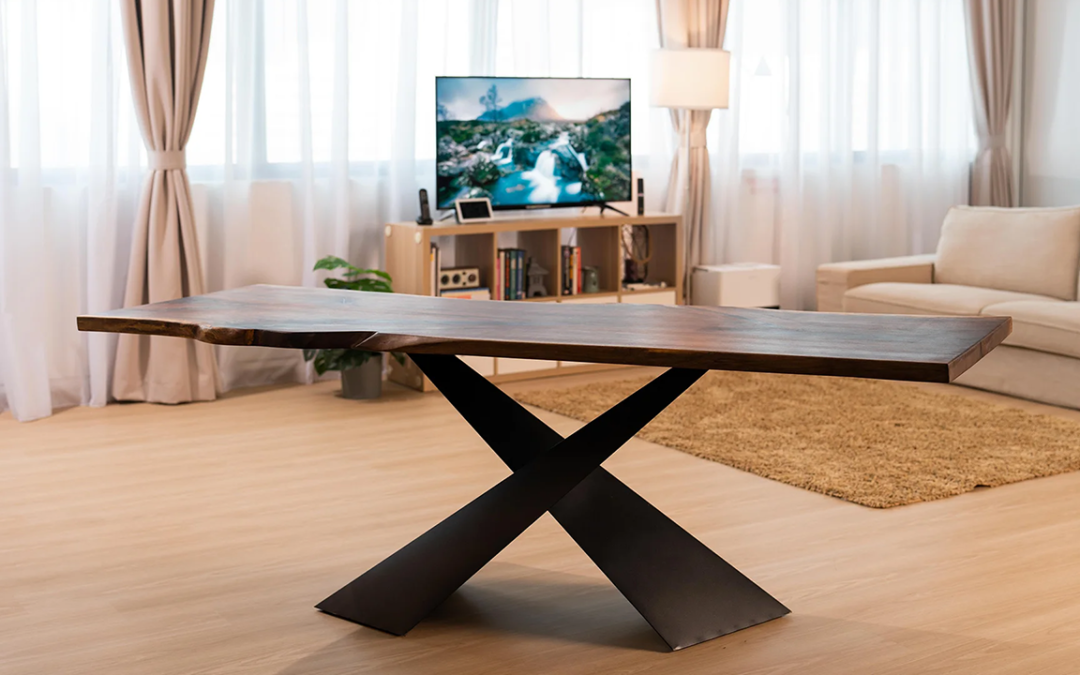The Impact of Dining Room Table Legs on Your Table's Overall Design
Wiki Article
How to Pick the Perfect Dining-room Table Legs for Your Home Décor
Selecting the ideal dining-room table legs is a nuanced procedure that needs mindful factor to consider of numerous aspects, including your space restrictions, visual choices, and practical requirements. The interaction in between styles, materials, and dimensions can substantially affect the setting of your eating location, making it vital to approach this decision carefully. As you ponder the myriad alternatives offered, it becomes clear that the best option extends beyond mere appearance; it can enhance your total eating experience. What variables should you focus on to guarantee your choice complements your home's one-of-a-kind character?Assess Your Eating Room
Assessing your dining room is critical for choosing the right table legs that match both visual appeals and functionality. Begin by determining the dimensions of your dining location, including ceiling elevation, flooring space, and distance to other furniture. This information will help figure out the proper size and elevation of your table, which directly affects the option of table legs.Following, consider the design and design of your eating space. An open-concept layout might profit from table legs that provide aesthetic agility, such as slim metal or acrylic alternatives. Alternatively, an extra typical setup may ask for sturdy wooden legs that give a sense of permanence.
Examine the existing color palette and products in your dining location. Balancing the table legs with these elements develops a natural look that boosts the overall decoration. Furthermore, consider the functionality required in your space. If you regularly host big gatherings, think about legs that give added support and stability.
Eventually, a detailed assessment of your dining space will certainly direct you in making a notified choice, making sure that your table legs not just enhance the aesthetic allure however also offer sensible purposes.
Consider Your Style Preferences
When picking dining-room table legs, it is important to review your individual style choices, as they substantially influence the general visual of your dining space. Your selection of table legs can either enhance or contrast with existing decor, making it important to straighten them with your recommended interior decoration theme.If your home leans towards a modern-day aesthetic, think about smooth metal or minimal wooden legs that supply a tidy, uncluttered appearance. For a much more traditional strategy, ornate wood legs with detailed carvings can add a touch of beauty and refinement. Industrial styles profit from robust, raw products such as recovered wood and steel combinations, showing a tough charm.
Additionally, farmhouse and rustic styles frequently favor tough, beefy legs that stimulate a feeling of warmth and comfort. On the other hand, if your decor is diverse, you could select unique forms or a mix of materials to produce aesthetic interest.

Evaluate Material Options
The option of material for dining space table legs plays a critical role in both sturdiness and aesthetic appeal. Common products include timber, metal, and composite choices, each offering distinct qualities that can influence the overall appearance and long life of your table.Wood is a timeless selection, understood for its heat and convenience. Hardwoods like oak and walnut offer outstanding stamina and can be finished in numerous discolorations to match any type view publisher site of style. However, softwoods like ache are extra susceptible to scrapes and dents, making them less perfect for high-traffic areas.
Steel legs, typically crafted from steel or aluminum, emanate modernity and commercial charm. They are immune and extremely durable to put on, making them ideal for families with youngsters or constant events (dining room table legs). In addition, metal can be finished in various colors, boosting the personalization possibilities
Composite products, such as MDF or laminate, offer price and diverse designs. While commonly less sturdy than strong timber or steel, they can still offer a fashionable look and are often very easy to preserve.
Inevitably, the material you choose must straighten with your way of living, aesthetic choices, and the level of use your table will experience.
Determine Height and Dimension
Selecting the ideal elevation and dimension for your dining-room table is important for both capability and comfort. The conventional elevation for eating tables generally varies from 28 to 30 inches, enabling ample legroom for a lot of people when seated. It is essential to consider the dimensions of your eating space and the types of chairs you intend to use.
Moreover, think about the percentages of your dining-room. A bigger table in a sizable location can create a grand atmosphere, while a smaller sized table works well in more intimate settings. Ultimately, the right height and size will balance with your general style and boost the eating experience for you and your visitors.
Explore Modification Possibilities

In addition, the style of the legs can be customized to fit numerous styles, such as rustic, modern, or industrial. For circumstances, conical legs can evoke a mid-century modern feeling, while great post to read beefy, block-style legs may reverberate with traditional or farmhouse decoration.
House owners can likewise explore shade coatings, from natural wood stains to paint, allowing them to match or contrast with the table top and surrounding decoration.
Additionally, leg height can be readjusted to suit particular seating arrangements or individual choices, improving both comfort and capability.
Finally, distinct decorations, such as carvings or decorative brackets, can even more individualize the table legs, making the dining experience not simply a meal yet a statement piece in the home. By taking into consideration these modification alternatives, home owners can create an eating space table that genuinely reflects their uniqueness.
Conclusion
Choosing the excellent dining-room table legs calls for cautious consideration of different variables, including the dimensions of the dining area, style preferences, product resilience, and wanted height. Personalization alternatives further boost the ability to accomplish a natural aesthetic that enhances the total design. By methodically examining these components, home owners can make sure that the picked table legs not just accomplish functional demands but also contribute positively to the eating experience and atmosphere of the home.Selecting the optimal dining room table legs is a nuanced procedure that needs cautious consideration of various aspects, including your area restrictions, aesthetic additional reading preferences, and practical needs.Analyzing your eating space is important for choosing the right table legs that match both appearances and capability.When establishing dimension, gauge the location where the table will certainly be put to ensure it fits conveniently, enabling for at least 36 inches of clearance around the table for easy movement. A larger table in a sizable location can create a grand setting, while a smaller table works well in even more intimate settings.Selecting the perfect dining room table legs requires mindful factor to consider of numerous aspects, including the dimensions of the eating area, style choices, material toughness, and desired elevation.
Report this wiki page